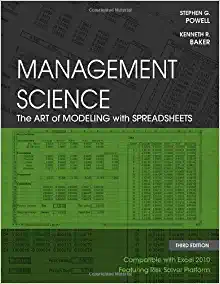Question
Use the table provided in the photo below! This is a review question I cannot figure out! Use Excel (show equations) to arrive to a

Use the table provided in the photo below! This is a review question I cannot figure out! Use Excel (show equations) to arrive to a conclusion.
Your manager wants to know how much money can PE make after buying the firm. You are given the following assumptions.
1.Market size for this type of watch is 1 million units in current year and is expected to grow at the rate of 10% per year in the coming five years;
2.Market share of Young is 20%. With some sales and marketing strategies, the market share can be increased by 200 basis points per year for the coming 5 years. That is, the market share next year will be 22%.
3.The average sales price is $100/unit in current year and is expected to grow at the rate of 3% per year.
4.The raw materials cost $15/unit in current year and is expected to grow at the rate of 4% in the coming 5 years.
5.The direct labor costs are $12/unit in current year and is expected to grow by 5% per year in the coming 5 years.
6.The sales and marketing costs account for 13% of the sales in current year. To increase the sales, PE plans to increase these costs to 16% in the next year and 18% in the year after next. After that, the costs will be 20% of the sales every year.
7.The administrative costs are 19% of sales in current year. PE plans to decrease them to 16% of sales in the next year, and 15% of sales from the year after next on.
8.The tax rate is 20% for all years.
9. The depreciation expense equals 10% of Property, Plant and Equipment of that year.
10. The Capital expenditure equals the depreciation cost.
11. Your manager wants you to use the discounted cash flow approach to estimate the continuation value.
12. To get the unlevered cost of equity, you are expected to estimate the levered beta of comparable firms using the stock return data of most recent 60 calendar months, calculate the unlevered beta assuming their debts are risk free, and take an average of the unlevered beta. (If you are not able to get the unlevered cost of equity, you can use 8% to continue the rest of the question. Partial points will be lost on the unlevered cost of equity estimation.)
To improve the operational efficiency, PE hopes to reach the following goals from the next year on: the accounts receivable will be 45 days of sales revenue, the raw materials will have 20 days of inventory, the finished goods will have 30 days of inventory; the minimum cash balance will be 20 days of sales. The wage payable will be 15 days of labor costs (including both the direct labor cost and administrative costs) and other account payable will be 60 days of raw materials and sales & marketing costs.
To increase the firm value, if the interest expense in current year is less than 30% of EBIT in the previous year, PE believes that the debt level is safe. In other words, PE wants to increase the debt level so that the interest expense for current year equals 30% of the EBIT of previous year for the coming 5 years. The interest rate for the safe debt is 5% per year. After five years, the acquired firm is expected to be sold at a price valued based on the perpetual free cash flows growing at 2% per year rate forever.
Based on these assumptions, what is the NPV of acquiring Young LLC.? What is the IRR from the PE's perspective? What is the cash multiple of this project?

Step by Step Solution
There are 3 Steps involved in it
Step: 1

Get Instant Access to Expert-Tailored Solutions
See step-by-step solutions with expert insights and AI powered tools for academic success
Step: 2

Step: 3

Ace Your Homework with AI
Get the answers you need in no time with our AI-driven, step-by-step assistance
Get Started


